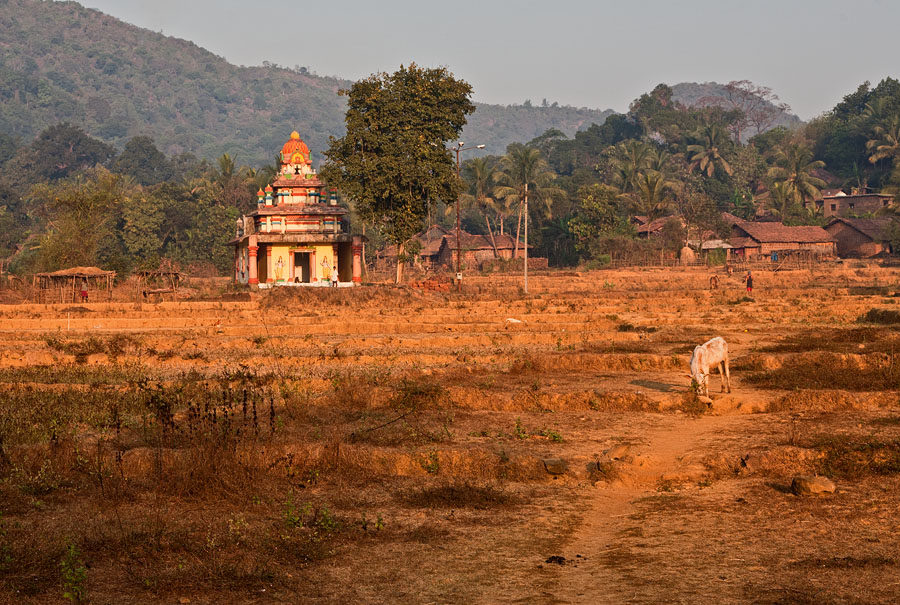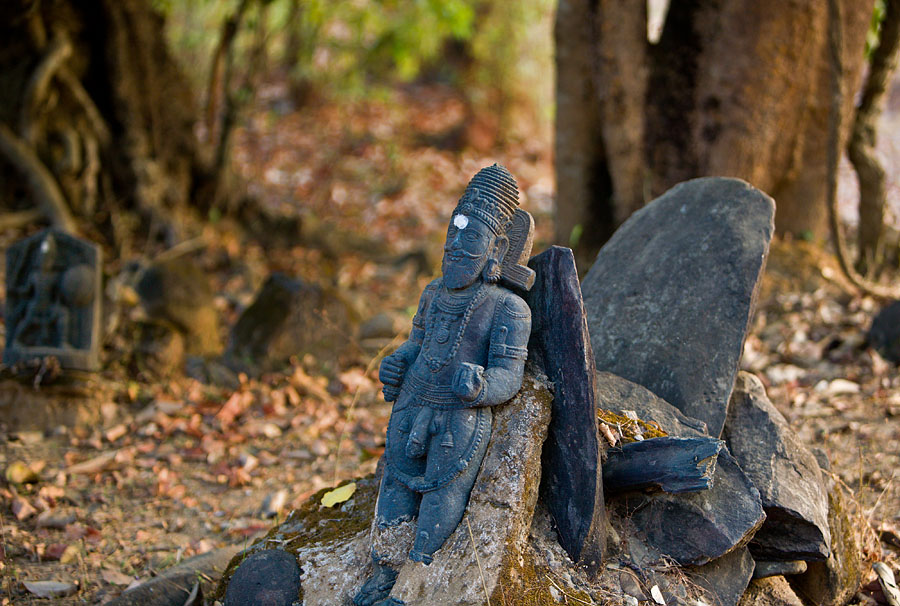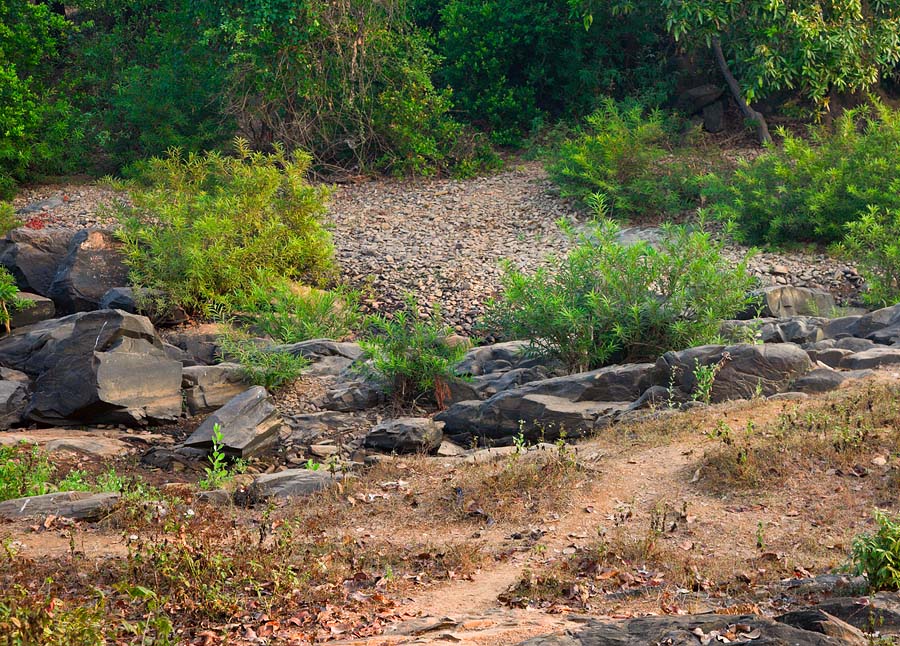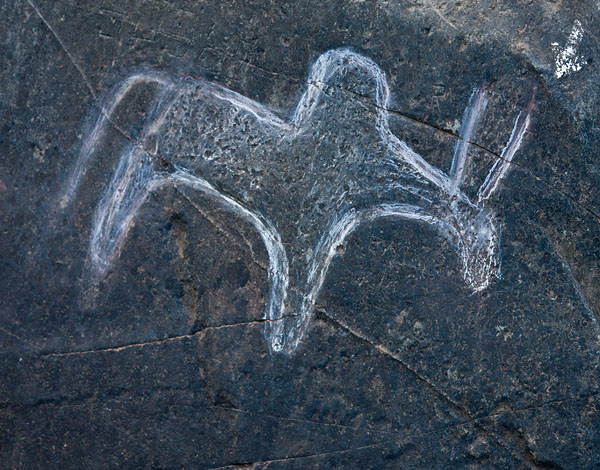The tiny village of Mauxi (pronounced “Mao-shi”) lies in the densely forested and as yet unmolested taluka of Sattari in northeastern Goa. I set out very early one morning from Panjim for the 60 or so minutes drive to sample sunrise in Mauxi and its pastoral purlieus. These tranquil settings and experiences, not long ago readily accessible, are becoming increasingly scarce in a Goa that is fast becoming uncivilized. As we shall see, even in this fairly remote settlement, unmarked on most maps of Goa, there are surprising delights to be found for the discerning.

Sunrise in Mauxi, Goa
5D, 24-105L
Nearby in a grove and out in the open lie ancient sculptures, among them an exquisite Vetal, au naturel.

Vetal in Mauxi, Goa
5D, 70-200L f/2.8 IS
The villagers then point me to a mass of rocks bearing prehistoric petroglyphs, unmarked and with no official protection. Only the recent intervention of a committed Goan environmentalist – Rajendra Kerkar – has alerted the villagers to the significance of this site.

Prehistoric rock art in Mauxi, Goa
5D, 24-105L

Close-up of prehistoric rock art in Mauxi, Goa
5D, 24-105L





Found myself at the place this morning. The petroglyphs are in bad shape. One of the villagers took me across the stream and then said that the good ones are now buried under the sand. The one shown above is intact but with matching engravings probably by the school kids. A trident has been carved nearby. The Vetal is missing. Another villager took me to a place opposite side of the road (opposite the Ravalnath temple) and showed me a stone and suggested that that could be the one. On comparison I find that it is not.
I suppose an archaeologist would find many interesting things in that gravel pit.
Is the Vetal anchored at the feet by mortar?